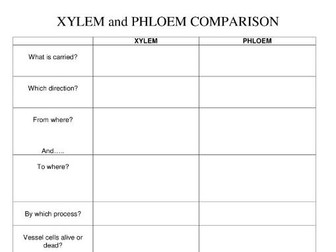Xylem, Phloem, and Plant Transport
This two page summary of transport systems in plants summarises key concepts and reinforces understanding. It includes:<br />
1. Topic key words<br />
2. Questions to make students think about movement of O2, CO2, and H2O in and out of the leaf.<br />
3. A summary table of the factors affecting transpiration rate.<br />
4. A summary table comparing xylem and phloem.<br />
<br />
Comments welcome!
